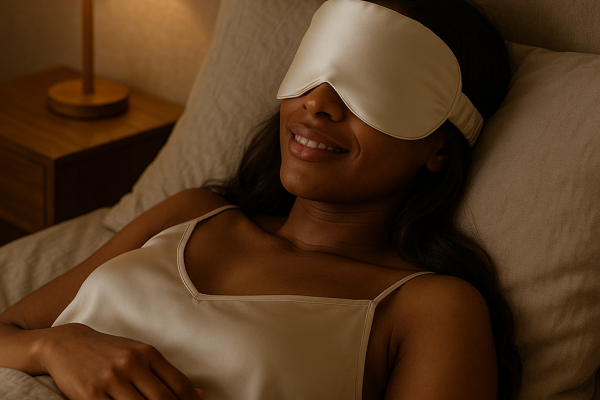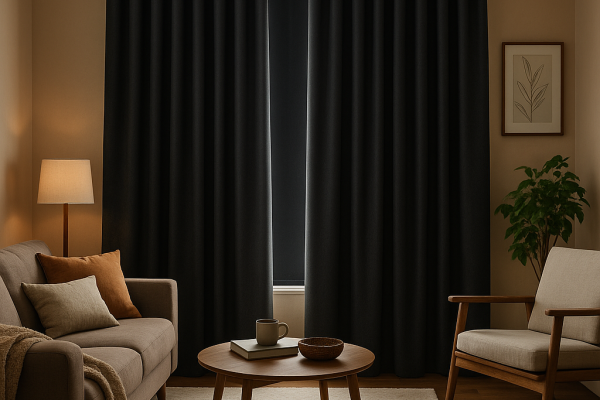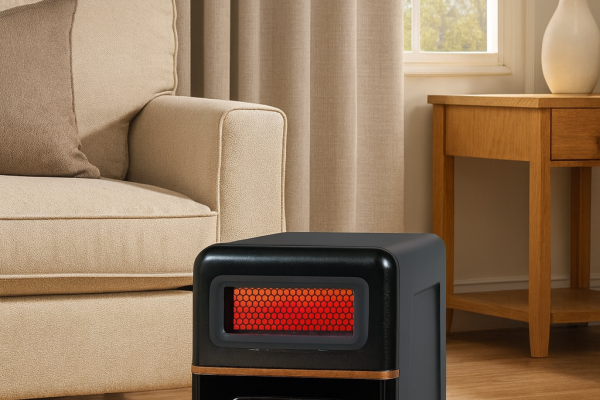Serotonin does more than just make you feel good – this vital neurotransmitter regulates mood, sleep, digestion, wound healing, bone health, blood clotting, and even sexual desire. Most people don’t realize that simple home environmental changes can naturally boost your serotonin levels without medication.
Let’s cut straight to what works best:
1. Strategic Light Exposure: Beyond Basic Sunshine
While you might know sunlight helps with Vitamin D, its direct impact on serotonin production is often missed. Research shows:
- Your brain produces serotonin in response to light exposure, especially natural sunlight
- Even your skin can synthesize serotonin when exposed to sunlight
- Serotonin production directly correlates with daily sunlight duration, regardless of season
Quick implementation tips:
- Open all curtains during daylight hours
- Place mirrors strategically to bounce light into darker areas
- Position yourself in east-facing rooms during morning hours
- Take a short morning walk or sit by a sunny window

Sunlight Therapy Lamp [click to view…]
For those with limited natural sunlight access, light therapy boxes provide an effective alternative. These devices mimic natural sunlight’s intensity and spectrum, helping regulate your circadian rhythm and boost serotonin.
Yellow Light Therapy: The Targeted Approach
Yellow light therapy stands out as particularly effective. Studies show yellow light:
- Increases serotonin release in the central nervous system, especially in the raphe nuclei
- Heightens happiness feelings and accelerates metabolic processes
- Boosts concentration and provides a “wake-up call” to the brain
- Improves reading scores in children
- Stimulates heart rate and elevates mood
Pale yellow specifically promotes happiness, cheerfulness, and relaxation. Just be careful not to overdo bright yellow exposure, as it can become overstimulating.
2. Indoor Nature Connection: Bringing the Outside In
The mental health benefits of nature are well-documented, but you don’t need to leave home to get them.
Research highlights:
- Simply viewing plants improves mood, reduces stress, and lowers blood pressure
- Actively engaging with plants (through gardening) boosts brain tryptophan and serotonin levels
Practical implementation:
- Add houseplants throughout your living spaces
- Incorporate nature-themed artwork or photographs
- Display calming nature scenes on screens
- Play recordings of ocean waves, gentle rain, or forest sounds
These visual and auditory nature elements create a soothing atmosphere that reduces stress and indirectly supports healthy serotonin levels.
3. Smart Dietary Strategies: Food Combinations & Gut Health
The Tryptophan-Carbohydrate Connection
Your body synthesizes serotonin from tryptophan, an essential amino acid you must get through food. What many people miss is the crucial role carbohydrates play in this process.
When you eat carbs, your body releases insulin, which helps transport amino acids, including tryptophan, more effectively into your brain. This is why you sometimes crave carbs when feeling down – your body is trying to boost serotonin.
Try these tryptophan-carb combinations:
- Whole-wheat bread with turkey or cheese
- Oatmeal with a handful of nuts
- Salmon paired with brown rice
These combinations include roughly 25-30 grams of carbs with tryptophan-rich foods like salmon, eggs, cheese, turkey, tofu, pineapples, nuts, oats, and seeds.
The Gut-Brain Connection
 Here’s a shocking fact: 90-95% of your body’s serotonin is produced in your gut, not your brain. This highlights the importance of the gut-brain axis and your gut microbiome.
Here’s a shocking fact: 90-95% of your body’s serotonin is produced in your gut, not your brain. This highlights the importance of the gut-brain axis and your gut microbiome.
Support your gut serotonin production with:
- Probiotic-rich foods: yogurt, kefir, kombucha, kimchi, sauerkraut, miso, tempeh, and natto
- Probiotic supplements
- Avoiding gut-harming foods like artificial sweeteners, trans fats, and highly processed items
4. Earthing: Connecting to the Ground’s Energy
Earthing (or grounding) involves direct skin contact with the Earth’s surface to absorb its natural negative electrical charge. Research shows this practice can:
- Increase brain serotonin levels
- Improve mood
- Reduce stress and anxiety
- Promote general well-being and relaxation
Indoor earthing techniques:
Hooga Grounding Mat [click to view…]
- Use grounding mats under your feet while sitting or on your desk
- Sleep on grounding sheets
- Try grounding socks, chair mats, or adhesive patches
- Touch grounded metal objects like radiators or copper pipes (if your home’s electrical system is properly grounded)
- Even taking a shower offers some grounding benefits through the plumbing system
Safety considerations:
- Verify outlets are properly grounded before using any electrical grounding products
- Avoid indoor earthing during thunderstorms
- Consult healthcare professionals if you have medical conditions, use devices like pacemakers, or take blood-thinning medications
5. The Power of Scent: Beyond Common Aromatherapy
Young Living Essential Oils Aria Ultrasonic Diffuser [click to view…]
Your sense of smell has a direct connection to your brain’s emotional and memory centers. When you inhale a fragrance, the signals go straight to your limbic system, triggering emotional responses and influencing neurotransmitter release.
Lesser-known mood-boosting essential oils:
- Ylang-ylang: eases anxiety and promotes self-esteem
- Jasmine: works as a natural anti-depressant
- Rose geranium: increases both dopamine and serotonin levels
- Clary sage: releases oxytocin and contributes to emotional balance
- Sandalwood: provides calming and grounding properties
- Neroli: reduces anxiety and improves overall mood
Specific compounds like linalool (found in lavender and rosewood) and β-damascenone (present in roses) have shown potential for enhancing mood by activating reward pathways and increasing serotonin levels.
Safe usage methods:
- Essential oil diffusers
- Aromatherapy inhalers for on-the-go benefits
- Natural soy or beeswax candles with essential oils
- Diluting with carrier oils for topical application on pulse points
Avoid synthetic fragrances in commercial air fresheners, which can release harmful VOCs and negatively impact indoor air quality.
6. The Color Yellow: Strategic Visual Influence

Beyond its potential as a specific light wavelength, the color yellow holds significant psychological associations that influence mood and potentially impact serotonin release.
Yellow’s psychological effects:
- Associates with sunshine, warmth, joy, optimism, and energy
- Increases alertness and stimulates brain processing
- Enhances motivation and concentration
- Acts as a “wake-up call” for the nervous system
Incorporating yellow into your home:
- Use yellow as an accent wall in gathering spaces
- Add yellow cushions, throws, area rugs, or curtains
- Choose warmer, softer yellows for bedrooms
- Use brighter yellows in living rooms and kitchens
- Balance with complementary colors like blue or gray
- Pair with neutrals like white, gray, or beige
- Consider yellow lighting fixtures or yellow-hued bulbs
Potential drawbacks to consider:
- Bright or neon yellow can cause irritability and focus problems
- Yellow is the most fatiguing color to the eye due to high light reflection
- Some yellow shades appear green or cold under certain lighting
- Darker yellows may increase crying in infants
Test different yellow shades under various lighting conditions before making major changes.
7. Negative Ion Generators: The Atmospheric Approach

Triad Aer V3 Whole home Air Purifier – Ionizer [click to view…]
Negative ions, abundant in natural environments like waterfalls, beaches, and after thunderstorms, may positively affect mood and well-being by potentially increasing serotonin levels.
Reported benefits:
- Improved mood
- Reduced stress and anxiety
- Increased alertness and mental energy
- Enhanced overall well-being
Some studies suggest negative ion generators may help alleviate depression symptoms comparable to antidepressants or bright light therapy. Meta-analyses have found associations between high-density negative air ions and lower depression ratings.
Potential mechanisms:
- Increased oxygen flow to the brain
- Influence on brain function and neurotransmitter production
- Balancing of the autonomic nervous system
Safety concerns:
- Some models produce ozone, a lung irritant
- Choose certified ozone-free or low-ozone models
- Ionization can cause particles to settle on surfaces, requiring more cleaning
- Limited effectiveness against larger allergens like pollen and dust
Creating Your Serotonin-Boosting Home Environment
For maximum impact, combine multiple approaches:
- Maximize natural light, especially in the morning
- Add houseplants and nature sounds
- Eat tryptophan-rich foods with carbs and focus on gut health
- Try indoor earthing techniques
- Use mood-enhancing essential oils
- Incorporate strategic touches of yellow
- Consider a quality negative ion generator
Observe how these changes affect your personal mood and energy levels, then adjust based on what works best for you. The combination approach creates a home environment that actively supports your emotional well-being.
Remember that while these natural approaches can significantly boost serotonin and improve mood, severe depression or anxiety should always be discussed with a healthcare provider.
Dora Decora is a biophilic interior design specialist and passionate blogger. With a deep commitment to integrating nature into living spaces, Dora specializes in creating environments that foster human-nature connections through thoughtful design elements. Her approach emphasizes sustainable materials, natural lighting, and organic patterns that enhance wellbeing and reduce environmental impact.
This post (https://homechroma.com/these-natural-elements-give-the-biggest-serotonin-boosts-at-home) was originally published by Dora Decora on Home Chroma. As an Amazon Associates partner, we are compensated for all qualifying purchases.























